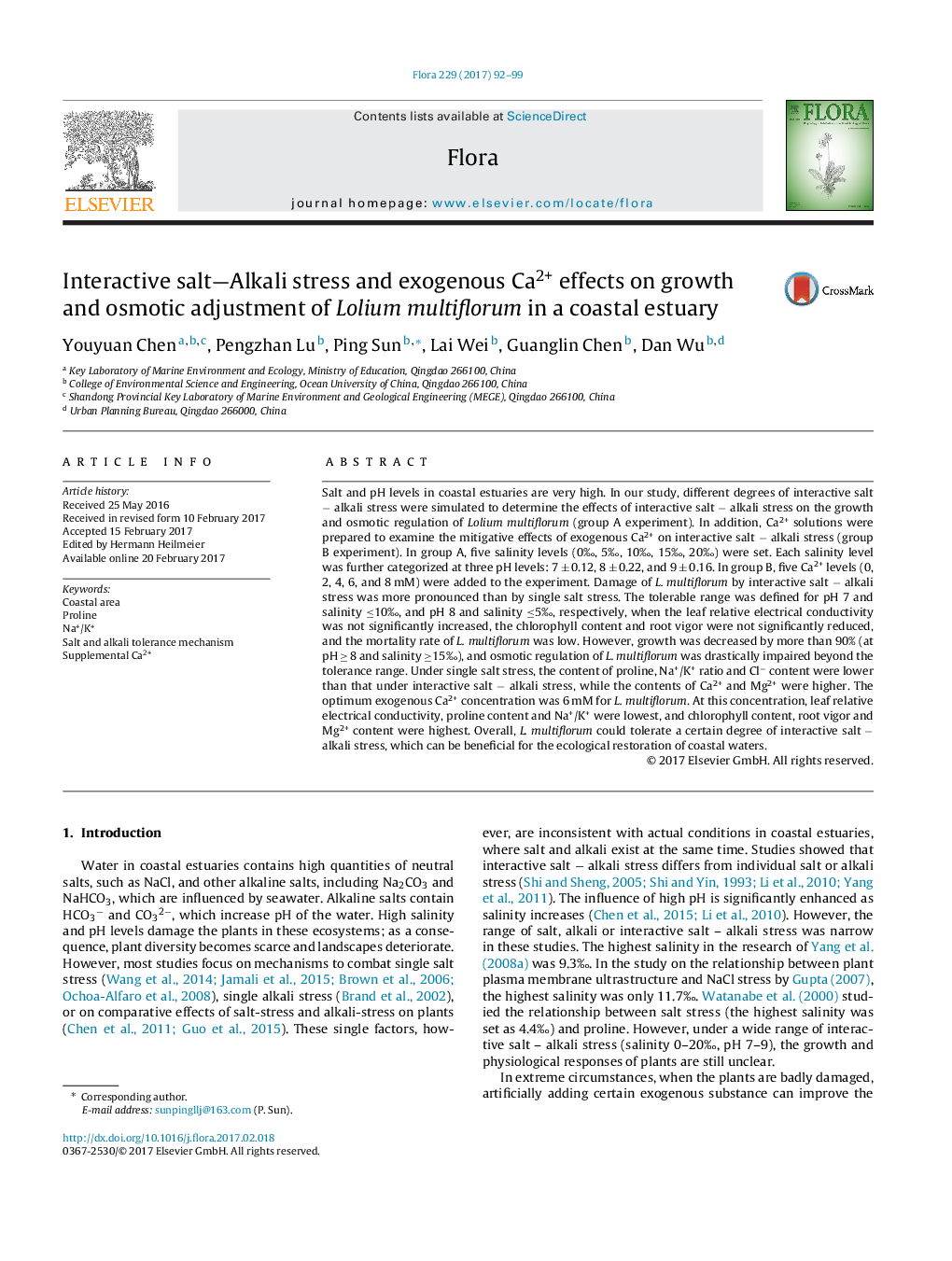| Article ID | Journal | Published Year | Pages | File Type |
|---|---|---|---|---|
| 5532360 | Flora - Morphology, Distribution, Functional Ecology of Plants | 2017 | 8 Pages |
â¢Interactive salt-alkali stress damage of L. multiflorum was more severe than single salt stress.â¢The tolerable range of L. multiflorum was pH 7 and â¤10â° salinity, and pH 8 and â¤5â° salinity.â¢Optimum concentration of Ca2+ promoting L. multiflorum growth was 6 mM under pH 8 and 5â° salinity.â¢Ca2+ could promote the absorption of K+ and the efflux of Na+, thus regulating Na+/K+ ratio.
Salt and pH levels in coastal estuaries are very high. In our study, different degrees of interactive salt â alkali stress were simulated to determine the effects of interactive salt â alkali stress on the growth and osmotic regulation of Lolium multiflorum (group A experiment). In addition, Ca2+ solutions were prepared to examine the mitigative effects of exogenous Ca2+ on interactive salt â alkali stress (group B experiment). In group A, five salinity levels (0â°, 5â°, 10â°, 15â°, 20â°) were set. Each salinity level was further categorized at three pH levels: 7 ± 0.12, 8 ± 0.22, and 9 ± 0.16. In group B, five Ca2+ levels (0, 2, 4, 6, and 8 mM) were added to the experiment. Damage of L. multiflorum by interactive salt â alkali stress was more pronounced than by single salt stress. The tolerable range was defined for pH 7 and salinity â¤10â°, and pH 8 and salinity â¤5â°, respectively, when the leaf relative electrical conductivity was not significantly increased, the chlorophyll content and root vigor were not significantly reduced, and the mortality rate of L. multiflorum was low. However, growth was decreased by more than 90% (at pH â¥Â 8 and salinity â¥15â°), and osmotic regulation of L. multiflorum was drastically impaired beyond the tolerance range. Under single salt stress, the content of proline, Na+/K+ ratio and Clâ content were lower than that under interactive salt â alkali stress, while the contents of Ca2+ and Mg2+ were higher. The optimum exogenous Ca2+ concentration was 6 mM for L. multiflorum. At this concentration, leaf relative electrical conductivity, proline content and Na+/K+ were lowest, and chlorophyll content, root vigor and Mg2+ content were highest. Overall, L. multiflorum could tolerate a certain degree of interactive salt â alkali stress, which can be beneficial for the ecological restoration of coastal waters.
Graphical abstractDownload high-res image (214KB)Download full-size image
